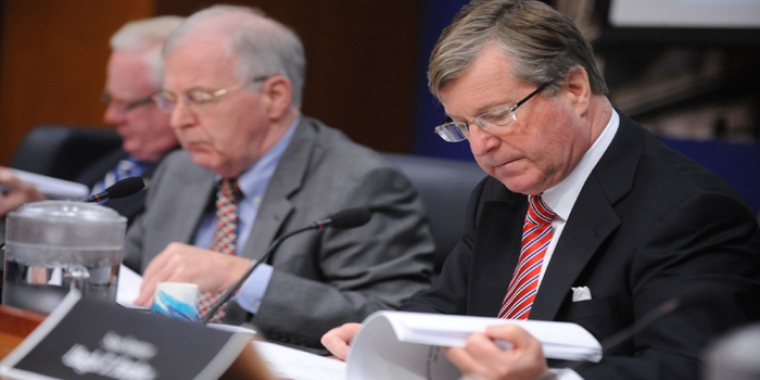
Legislation Will Seek To Improve Empire Zones For Rural Regions

Albany, N.Y.-- State Senator George H. Winner, Jr. (R-C, Elmira), chairman of the joint, bipartisan Legislative Commission on Rural Resources (LCRR),will introduce legislation to restructure New York’s Empire Zone program so that it works more effectively in rural, upstate regions.
Winner’s legislation is being developed based upon an LCRR survey last year of Empire Zone officials in 35 rural counties. Most of the officials responded with suggestions to improve the usefulness of the Empire Zone program for their communities. A December 2006 report from the LCRR, "Actions to Revitalize Rural New York through an Enhanced Empire Zone Program," summarizes the survey’s findings, highlights the recommendations offered by local zone officials, and provides a map of both rural and urban zones statewide.
"New York’s Empire Zone program still isn’t as effective as it could be to encourage economic growth in rural, upstate New York," said Winner. "The program remains largely urban-oriented with a built-in bias to try to hit a home run every time out. It focuses on attracting the large manufacturer or the big corporation, and that’s too often a hit-or-miss effort. We’re ignoring real opportunities for an Empire Zone in a rural, upstate region to be used to build a solid, sustainable foundation of small businesses. Jobs are jobs, and I believe we can make New York’s investment in Empire Zones produce much more for upstate, rural economic growth."
Winner said that his proposed legislation will promote flexibility and streamlining in the current Empire Zone program so that it’s more useful to rural areas and small business development.
"A cluster of small businesses is like a pot of gold for a rural community," Winner said, noting that the original intent of the Empire Zone program was to assist economically depressed and impoverished areas throughout the state. "Many of the most economically challenged communities in this state are rural. It’s common sense that New York’s No. 1 economic development tool should be able to work effectively in these communities."
The Empire Zone program was established in 1986. Originally called "economic development zones," they were intended to bolster areas with pockets of poverty, high unemployment, dilapidated industrial and commercial facilities and shrinking tax bases. Businesses located within the zones receive significant tax reductions through a range of credits on items including wages, capital investment and real property taxes.
The LCRR report notes that the last major overhaul of the Empire Zone program came in the 2005-06 state budget, when the Legislature and Governor George Pataki agreed to extend the program until 2011, implement new safeguards against abuses, authorize new zones and bring the program more in tune with its original purpose of addressing poverty and unemployment in the economically hard-pressed areas of New York. While several of the changes made in 2005 have been extremely beneficial to rural economic development, primarily by giving local zone administrators greater flexibility, the survey also revealed several widely held recommendations to make the program even more useful in rural areas.
These recommendations, which will be incorporated into Winner’s forthcoming legislation, will seek to:
> establish rural "centers of excellence" with the goal of attracting a cluster of basic and high-tech industries appropriate to rural areas, with an emphasis on small business development;
> streamline the process of calculating Empire Zone tax credits to foster a speedier return on investment in rural communities;
> abandon the program’s "one size fits all" approach and incorporate greater flexibility so that the program can be better customized to accommodate rural needs;
> reduce the complexity of the application process for small businesses;
> establish a new "agribusiness opportunity zone" targeted to farmers/growers, suppliers and processors, with special program requirements and benefits and acreage considerations;
> reduce the costs associated with mapping, public notices and hearings in the designation and approval of regionally significant projects; and
> incorporate program benefits and incentives that help reduce energy and telecommunications costs for businesses.



